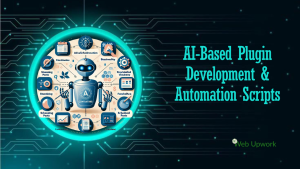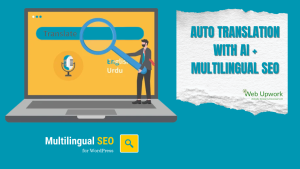In today’s fast-moving digital world, the phrase “lead capture” may sound a bit old-school, but it’s quietly undergoing a major upgrade thanks to artificial intelligence. I’m talking about how websites and apps are now using AI-based systems and smart forms to not just capture leads, but to qualify, prioritise, and engage them in ways we haven’t seen before.
A little context: What’s happening on the ground
You’ll have seen plenty of websites with simple “Name + Email + Submit” forms. They’ve worked for a while, but they suffer from problems: low completion rates, generic responses, and many leads that go nowhere.
Now enter the era of:
Smart forms which change questions based on what a visitor has already filled in.
AI algorithms that analyse behaviour, firmographics, intent signals and assign a lead-score automatically.
Real-time enrichment of lead data (for example automatic filling of missing details) so that you have richer leads in your pipeline.
In short: what used to be a passive “here’s a form, fill it if you like” is becoming an active conversation between your website and the visitor—and backed by smart logic behind the scenes.
Why I find this interesting
From my standpoint (as someone who designs WordPress sites and wants to help clients get more value), a few things stand out:
Better conversion rates: If the form adapts to the user’s context (for instance skipping irrelevant questions, or asking deeper ones only if needed), fewer people give up midway. That means more leads reaching you.
Quality over quantity: It’s easy to get lots of leads; what’s harder is getting good leads who are more likely to convert. With AI-scoring you focus your energy where it matters.
Time-saving for teams: Instead of your team sifting through hundreds of raw leads, AI filters or prioritises, so follow-up becomes sharper and faster.
Better experience for the visitor: When a visitor sees a form that feels relevant (not generic), it reflects well on your brand. I always believe in user-experience as much as backend-power.
Competitive edge: In markets like India, many businesses still rely on basic forms. If you adopt smart forms early, you set yourself apart.
Key elements of AI-based lead capture & smart forms
Let me break down the main technical and functional pieces I’d look for (and often implement) in such solutions:
Dynamic / conditional logic
Forms that ask different questions depending on earlier responses (for example, if someone says “I’m looking for enterprise licence” you ask different subsequent questions than if they say “I’m just exploring”).
Helps reduce “irrelevant” questions and form-length fatigue.
Progressive profiling
Rather than ask for everything in one go, you ask key info first (name, email) and later, when the visitor returns or engages again, ask more details. This reduces friction.
According to an article, decreasing the length of initial forms and shifting additional fields to follow-up can yield better results. hyphadev.io
Automatic data enrichment and autofill
If the visitor is known (cookie, login, prior visit) you pre-fill what you can.
Behind the scenes, the form or AI checks public data or firmographic details to supplement what the visitor entered. This makes the lead richer without taxing the visitor. leadgenapp.io+1
AI-based lead scoring & routing
Once the form is submitted, the backend AI assigns a score based on predefined criteria + learned patterns (behaviour, firmographics, engagement) telling your team “this is hot, follow up now”.
Routing: the hot lead goes to your best salesperson, others to nurture campaigns.
Personalised follow-ups and nurturing
Based on responses + scores, the system triggers follow-ups: email, chat, even SMS. The messages are tailored to what the visitor indicated interest in.
Real time means the moment the form is filled, follow-up can begin—reducing the dreaded “wait 48 hours” period.
Analytics and optimisation
You track which forms convert, drop-off points, how long visitors spend, and then the AI helps optimise (for example change question phrasing, reorder fields).
The result: form conversion improves, lead quality improves, cost per lead decreases.
What works and what to watch out for
While the technology is compelling globally, Indian businesses and audiences bring their own flavour. Here are some points I keep in mind:
Mobile-first audience: In India, many visitors come via mobile devices. So the smart forms must be mobile-friendly, load fast, and not look like heavy desktop versions.
Language / localisation: While English is common in many B2B contexts, you’ll find forms that perform better in regional languages or have simple, conversational wording. Make sure AI logic supports that.
Mind the privacy and trust factor: Indian users are increasingly aware of data privacy. If a form asks for too many sensitive details upfront, it might deter them. Smart forms help by reducing upfront ask and “warming up” visitors.
Internet speed / connectivity issues: Forms that time out, or are heavy with scripts, will frustrate. So lightweight implementation matters.
Cost vs ROI: Many small/mid-sized Indian businesses are budget-conscious. It’s important to show that the smart-form/AI investment pays off — either via more leads, higher conversion, or better quality.
Follow-up culture: In India, even if the form is submitted, timely follow-up is key. If the AI scores a lead “hot” but sales team responds after days, the advantage disappears. So process + people matter.
The “cool side” and “don’t get caught out” side
On the fun side: imagine a visitor lands on your service page at midnight, fills a smart form, the AI instantly routes the lead to a chat-bot or sets up a callback for early morning — you just captured a deal while others sleep. That to me is exciting.
But on the caution side: an AI is only as good as the data it has. If you start with messy data, duplicate records, missing fields, then your scoring will be off. Also, if you over-automate and lose the human touch, you might scare people away by making the experience feel robotic. As one recent article put it: “The best workflows combine AI efficiency with human empathy.”
If I were advising a client (or implementing on my own site), here’s the roadmap I’d suggest:
Audit your current forms
Look at your existing lead capture forms: What fields are there? What’s the conversion rate? Where are drop-offs? What types of visitors abandon?Clean your data
Before AI can do its magic, ensure your CRM data (if you have one) is de-duplicated, standardized, fields correctly mapped. This upfront work pays big time.Define your lead-qualification criteria
What makes a “good” lead for you? Industry, company size, interest shown, budget, timeline? Setting these defines your scoring model.Build a smart form pilot
On one high-traffic page create a “smart form” variant: maybe fewer initial fields, conditional logic, minimal friction. Link it to your AI lead-scoring engine or at least a rule-based scoring if full AI isn’t yet possible.Connect routing and follow-up workflows
Ensure that once the form is submitted, your lead is routed, flagged, and you have an automated immediate follow-up (email/notification) + person follow-up. Speed matters.Measure & optimise
Track: form completion rate, lead quality (how many turn into opportunities), time to respond. Adjust fields/questions/logics until you see improved results.Scale and iterate
Once your pilot shows results, roll out smart forms + AI routing to other pages. Continue refining or adding features: chat-bot integration, multi-step forms, dynamic content.
To sum up, in my view, AI-based lead capture and smart forms represent a significant leap for lead generation and conversion, especially in contexts where you’re getting decent traffic but the conversion or follow-up process feels weak. For Indian businesses (and especially for websites built on platforms like WordPress), this is a tremendous opportunity: you can implement these capabilities without having to be a mega-enterprise. The tools are accessible and the benefits measurable.
Product Schema
{% if template.name == 'product' %}
<script type="application/ld+json">
{
"@context": "https://schema.org/",
"@type": "Product",
"name": "{{ product.title }}",
{%- if product.featured_media -%}
{%- assign media_size = product.featured_media.preview_image.width | append: 'x' -%}
"image": [
{{ product.featured_media | img_url: media_size | prepend: "https:" | json }}
],
{%- endif -%}
"description": {{ product.description | strip_html | json }},
"sku": "{{ current_variant.sku }}",
"mpn": "{{ current_variant.barcode }}",
"brand": {
"@type": "Brand",
"name": "District A Design"
},
"review": {
"@type": "Review",
"reviewRating": {
"@type": "Rating",
"ratingValue": "5",
"bestRating": "5"
},
"author": {
"@type": "Person",
"name": "Example site"
}
},
"aggregateRating": {
"@type": "AggregateRating",
"ratingValue": "5",
"reviewCount": "5"
},
"offers": {
"@type": "Offer",
"url" : {{ shop.url | append: variant.url | json }},
"priceCurrency" : {{ cart.currency.iso_code | json }},
"price" : {{ current_variant.price | divided_by: 100.00 | json }},
"priceValidUntil": "{{ 'now' | date: '%s' | plus: 31536000 | date: '%Y-%m-%d' | uri_encode | replace:'+','%20' }}",
"itemCondition": "https://schema.org/NewCondition",
"availability" : "http://schema.org/{% if product.available %}InStock{% else %}OutOfStock{% endif %}"
}
}
</script>
{% endif %}
BreadcrumbList Schema
<script type="application/ld+json">
{
"@context": "https://schema.org",
"@type": "BreadcrumbList",
"itemListElement": [{
"@type": "ListItem",
"position": 1,
"name": "Home",
"item": "https://Examplesite.com/"
},{
"@type": "ListItem",
"position": 2,
"name": "{{ product.title }}",
"item": "{{ shop.url }}{{ product.url }}"
}]
}
</script>





